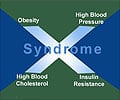A metabolic disease that arises from an inherited defect that prevents the proper metabolism of galactose, a sugar commonly found in dairy products, like milk is called galactosemia.
Exposure of affected people to galactose, can damage most of their organ systems and can be fatal. The ability to study the disease is limited by a lack of animal models. New information suggests that similarities between humans and flies may provide scientists with useful clues.The inability to breakdown simple sugars in common foods, such as milk, can lead to the accumulation of sugars in the blood, which become toxic and damaging to a variety of organ systems. People with galactosemia, either classic galactosemia or epimerase deficiency galactosemia, have genetic mutations that decrease their levels of the key enzymes (GALT and GALE) responsible for the metabolism of a common form of dietary sugar. Without proper levels of these proteins, these people are unable to process the sugar, galactose, which makes up about half of the calories in milk. Both disorders can have severe effects. Patients suffer from liver and brain damage, cataracts, and kidney failure. The disease can be fatal. There is currently no cure and prognosis and treatment remain ill-defined, partly due to the lack of a good animal model that scientists can use to study the disease and to develop potential treatments.
Discovery of treatments for galactosemia is complicated by the unique sensitivities among different organisms to defects in sugar metabolism. For example, galactose accumulation in mice does not have the same physiological consequences as it does in humans, limiting the applicability of mouse models and slowing advances in this area of research. The fly (Drosophila melanogaster) is a popular laboratory model organism that has been used for many decades and in numerous studies, including those of human metabolic disease.
Scientists at Emory University developed flies that carry genetic changes similar to those found in patients with galactosemia. Like patients with classic galactosemia, flies that are missing GALT survive if they are raised on food that does not contain galactose, but die in development if exposed to high levels of galactose. Flies with impaired GALE function also succumb in greater numbers when exposed to galactose during development, similar to patients with defects in the same area of their metabolic pathway. The Emory scientists also tested the relationship between the timing of galactose exposure with the fly's outcome, and designed and characterized flies in which they could remove or control the production of GALT or GALE at variable points in the animal's development to determine when and where the sugar breakdown was most needed. These models can help researchers understand how changes in sugar metabolism lead to disease and open the door to novel drug discovery by serving as a testing ground for candidate therapeutics.
Source-Eurekalert









